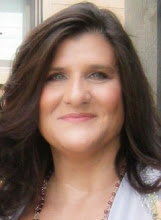The average social media user has developed a plethora of connection from friends, to groups, to information sites they follow. What this means is that your feed cannot possibly feed all of it to you everyday. There simply isn't room. Imagine your feed is a ten-page magazine. Algorithms have to decide what portion of the massive amount of information you see will appear on those ten pages.
What you like, share, and comment on gets moved up the priority list. That's why a cat meme will be seen by your followers and friends rather than the exciting news about your new release.
The algorithm looks at the source of the content. Do you normally interact with them? Did you select "see all posts" from that source? Do you regularly comment and like their content? Many friends fall by the wayside when there is no interaction from you. So likes and comments are critical if you wish to continue to see your friends' content.
What kind of post do you interact with most? Do you "heart" cat pictures, cute animal videos, entertainment news clips, scandals, politics, or your favorite author's book news? Facebook is now asking, "Do you want to see more posts like this?"
Do you spend time liking or commenting on people's posts? It is a simple thing you can do to help your favorite authors and content creators get more traction. A simple heart, smiley face, or thumbs up will do. Shares help as well.
The other important factor is that social media platforms like Facebook want users to stay on Facebook. So an out link to an article, blog post, Amazon, etc., gets less love than a link to something on your Facebook product page or another user's feed. Facebook is also cramming "suggested" posts into your ten-pages. Highly annoying, but based on the type of content you normally devour theory.
One thing we are experimenting with is to put the actual link to a blog post, book link, or other outline in the comment section rather than the post itself.
Write an intro stating what the post is about. Seduce the reader into wanting to know more. Post a picture with it. When users are scrolling, their eye is caught by an image before text. Then put your link into the comments. The comments travel with the post if people share it. You can also add the link to the image itself. That means creating an image which most computers have an app for. It is easy to learn.
When I see posts about books, I want to see the cover. You can also post images of characters, settings, or some interesting trivia from the book. In the text, you should always include the title, the genre, and a brief description. Even if the cover suggests genre, it doesn't replace the brief description. All the superlatives in the world don't really matter. Even if Stephen King or JK Rowling has called it the best new novel of the year. The description is so often left out of promotional posts. It may be a genre I like, but the description (character + setting + central problem) determines whether I will investigate further. I might not be in love with the genre but I may be intrigued by the setting.
I do look at book ads, book suggestions from friends, and my social media connections book news. I have discovered so many wonderful indie writers this way. I buy books based on suggestions often.
If your post is a link to your blog or website, use the same technique. Tell the reader what they have to gain by looking at your blog. As users scroll through their ten-page feed, an image or meme captures more attention than words alone even for blog posts.
Nothing turns a reader off more than a nothingburger of a post. I can't tell you how often I visit a post only to find they never cover the actual lead in. That is an instant block. So don't do it. Make the visit worth their attention.
Another important tip: if you have your privacy settings set on friends or friends of friends, it limits who can see your posts. You can individually change the privacy settings for each post. So if you wish the news about your book or blog to reach a wider audience, I recommend changing the privacy setting for that post to "everyone." That does not give users access to your other private posts. Just that one.
Hopefully this has added to your understanding of the algorithm meat grinder. If you have additional tips or experiences, please drop them in the comments.
Diana Hurwitz is the author of Story Building Blocks: The Four Layers of Conflict, Story Building Blocks II: Crafting Believable Conflict, Story Building Blocks III: The Revision Layers, and the YA adventure series Mythikas Island. Her weekly blog, Game On: Crafting Believable Conflict explores how characters behave and misbehave. Visit DianaHurwitz.com for more information and free writing tools. You can follow her on Facebook. |




I've certainly seen a difference on the reach of the posts since making that little change of putting the link in the comments instead of into the post itself. It's a bit of a pain, but worth doing.
ReplyDeleteHelpful information Diana. I'm trying to wrap this tired old brain around it all. I will start putting links in comments when I remember. :-)
ReplyDeleteGood info, Diana. I will add a link to someone else's post about their book if they don't. It makes no sense to write about your book without that link, yet so many do.
ReplyDelete